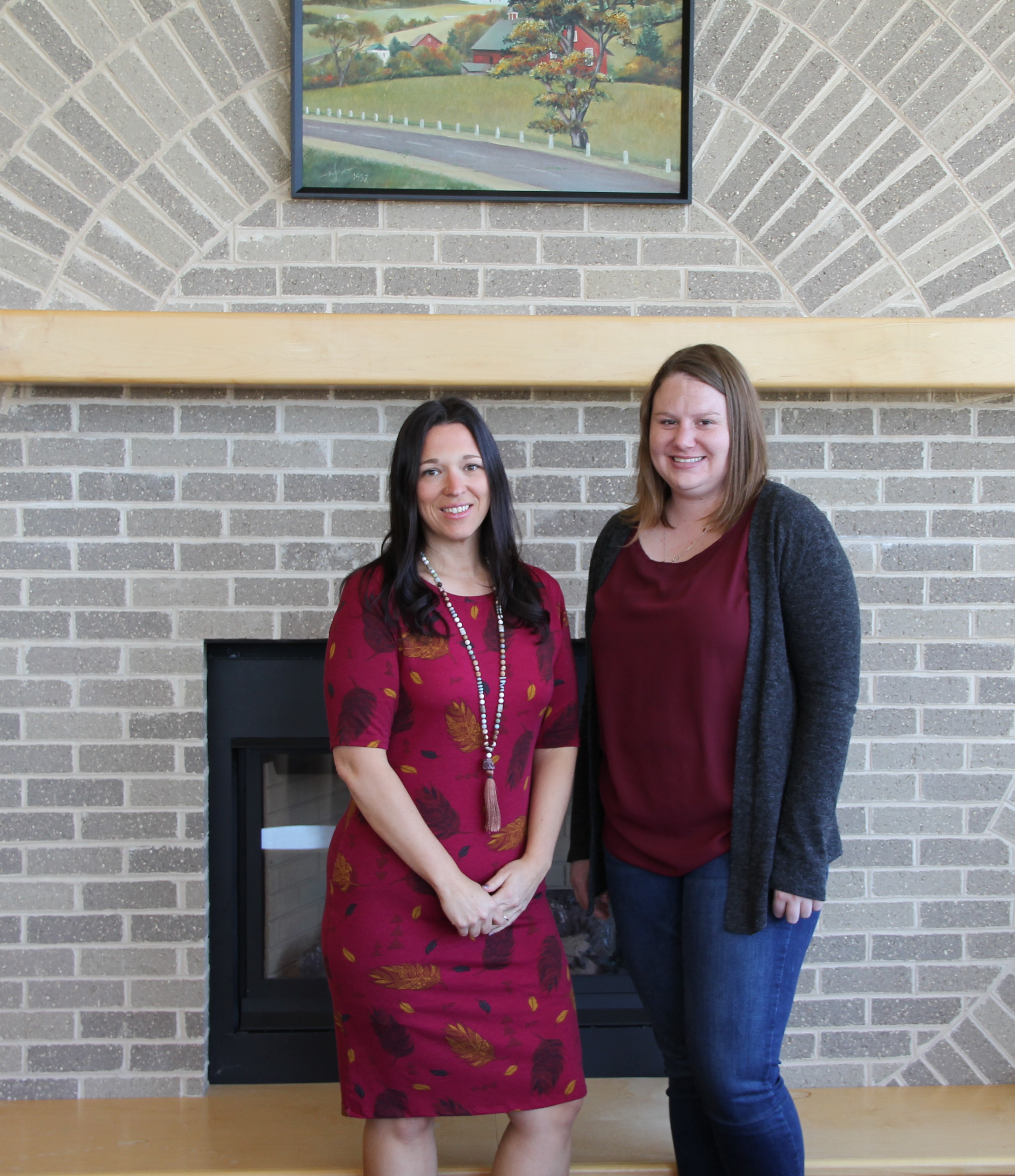Campus News
April 30, 2019
GC's Library and Learning Commons: working together to boost student success
GC's Meslener and Ruby present at 2019 MDCLCA conference

Pictured (left to right) are GC's Ashley Ruby, Director of Advising and Academic Success, and Jennifer Meslener, Interim Director of the Learning Commons.
Interim Director of the Learning Commons, Jennifer Meslener, and Director of Advising and Academic Success, Ashley Ruby of Garrett College, recently presented at the Maryland College Learning Center Association (MDCLCA) annual conference at Stevenson University.
The conference theme on March 25th, Breaking Ground in Learning Centers, aligned seamlessly with initiatives that recently took place at Garrett's McHenry campus. Highlighting the session track of 'Expanding Spaces', Meslener and Ruby presented a 60-minute break-out session titled, "To the Window, to the Wall: Reimagined Spaces in One Short Year."
Their session discussed Garrett College's journey toward a Learning Commons outcome beginning with both goal development and strategic planning through project execution.
During the conference presentation, Meslener and Ruby focused on increasing attendees awareness of ways to transform physical space to increasingly engage students, staff, and faculty; empowering viewers to explore opportunities to stimulate increased student learning and remove barriers to student success at their home campuses; and identifying innovative strategies to streamline the student experience, enabling quick and efficient access to learning commons services.
In June 2017, Meslener, Ruby, and then Director of the Learning Commons, Robert 'JR' Kerns, boldly took the first steps toward reinventing a long-established traditional library into a cutting-edge, energized learning environment, launching a sustainable investment in learning for future students.
Changes within the 18,000 square foot space reflected low-cost and student-centric initiatives, including; attractive brand-compliant signage, designated student work zones, relocated academic support services, staff cross-training, student and professional artwork displays, mobile device charging stations, and enhanced library services.
"Higher education professionals today continuously seek innovative ways to support student learning. Community colleges, understandably, must do this within the constraints of limited resources," noted Ruby. "This transformation provided generous opportunities to collaborate across traditional departmental lines and transformed teaching and learning in a true culture-shift with little required funding."
One significant change within the transition to a Learning Commons is the relocation of tutoring services to the central library area. In this move, space was designated to facilitate tutoring in a transparent and approachable way within a collaborative workspace environment.
Prior to the Learning Commons transition, GC's tutoring services occurred in small private rooms outside of general visibility, focusing on math, writing, and science content only. The structure of tutoring services was adjusted to incorporate content support for social sciences, humanities, and other content areas on a walk-in basis with expanded weekly hours. Since the transition, more students are accessing tutoring (23.8%) and students are spending more time in tutoring sessions (92.4%).
"Since the tutoring center is now in the library, students are noticing it, and have been more inclined to stop and ask for help. The physical changes have created a more relaxed area to study and work in," noted Khristyn Towles, a current GC student and peer tutor.
The Learning Commons transition involved changes to existing physical infrastructure. Library book stacks were cut in half to open up the space and better allocate the reduced physical book collection. Construction was performed in-house. Materials from the bookshelves were repurposed to build tables for the college's new student-centered Laker Lounge.
"Not only did this transformation involve reimagining existing physical space and identifying low-to-no-cost solutions, we quite literally cut the bookshelves in half, which revealed breathtaking views through the floor-to-ceiling windows," stated Meslener.
The Learning Commons movement opened the door to improve and enhance online services offered to students and the community.
LibGuides were developed and placed online to offer students with easy access to shared information and resources. An EZ Proxy service was initiated to allow students access to online databases and subscriptions with one simple click. Online reference services were added as well.
Within the physical space, students now have increased access to color printing and scanning services. As a result of these and other steps taken, physical circulation has increased slightly, while online database usage has jumped 23.5%. Plans for the future include continued momentum in efforts to collaborate and further facilitate student learning. Future staff cross-training, improved physical and online collection efforts, and the addition of inter-library loan services are all being explored.
As a result, student performance measures are on the rise and the atmosphere in the space has been revitalized.
"The open view of the large windows allow more natural light in and if you need to take a break from your studies, you can look up and out the window, not at tall bookcases," remarked Towles. "It used to be dark and quiet in here, but now it's much more inviting! The new additions such as the charging stations, signage, art work, and color printing also make the space more functional."






